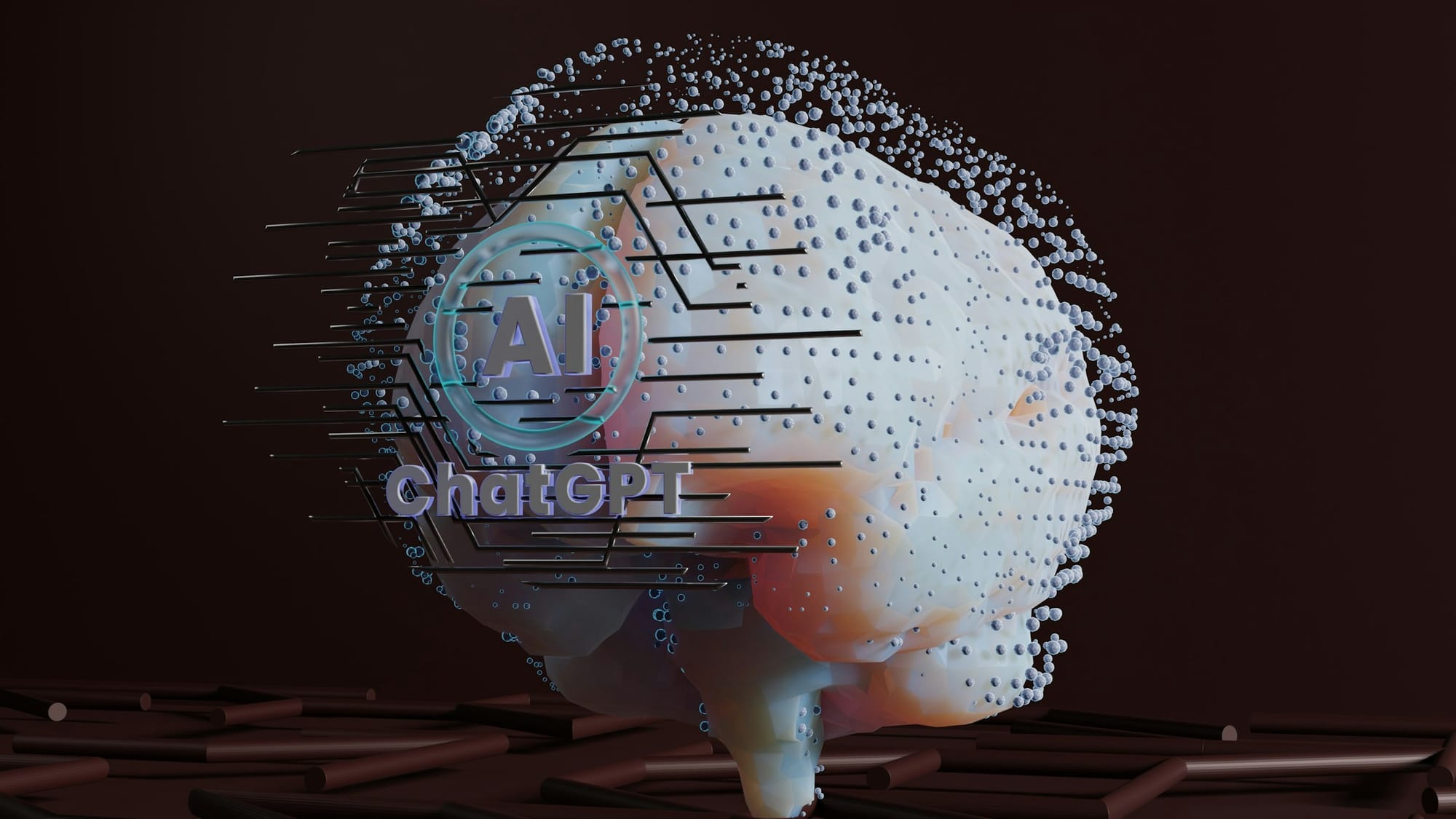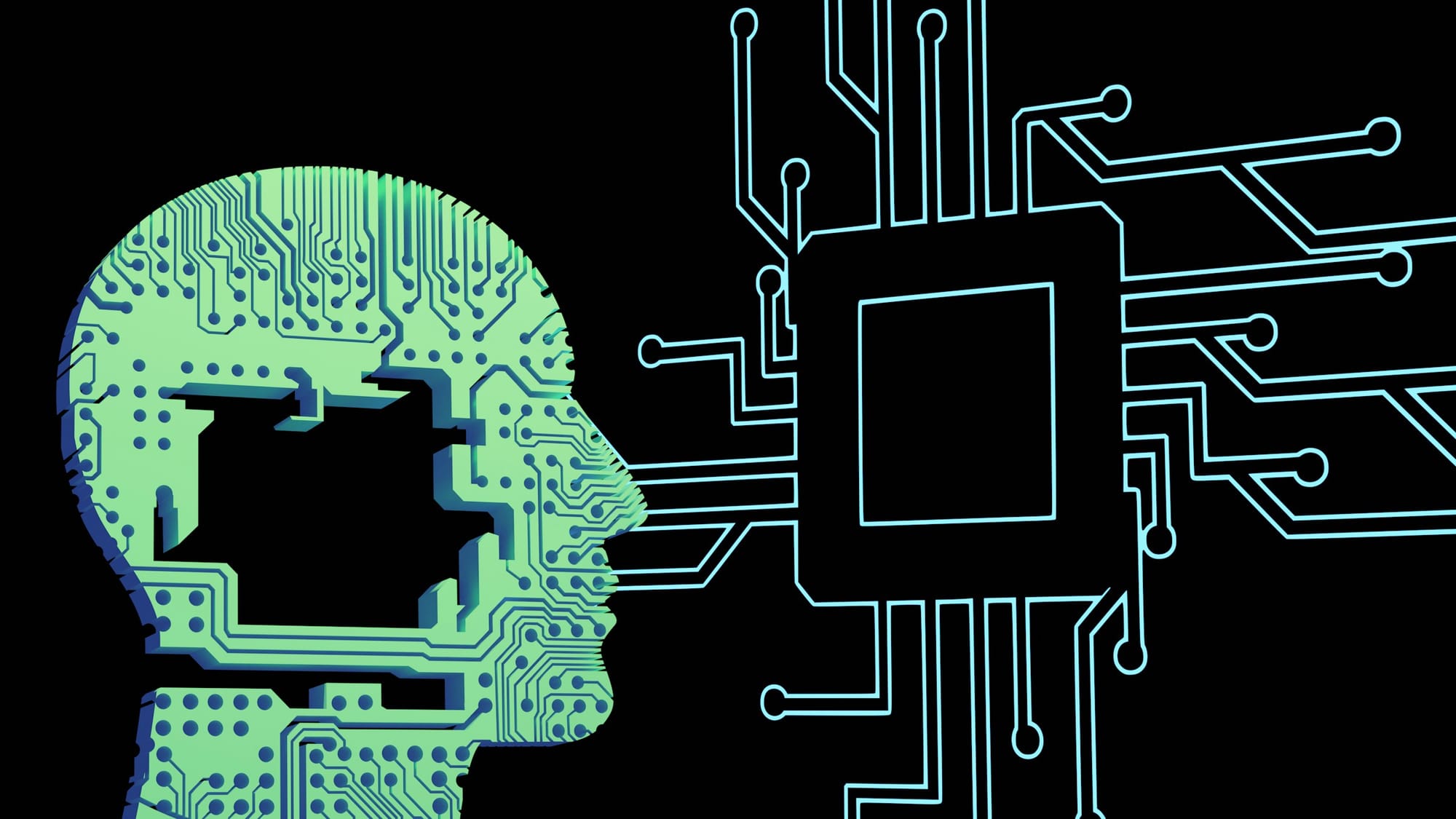As you explore ways to enhance your product with AI, you may need clarification about the distinctions between large language models and generative AI. You’re not alone. Many feel overwhelmed by the similarities between these two technologies, which can lead to ill-informed decisions when integrating them into products. This article breaks down the core differences between multimodal LLM and generative AI so you can make informed choices for your AI tech stack.
Lamatic’s generative AI tech stack can help you achieve your goals. Our solution empowers you to seamlessly distinguish between LLMs and generative AI so you can focus on integrating the technology that best suits your product’s needs.
Is ChatGPT Generative AI or LLM?

ChatGPT is an AI chatbot that can answer your questions using data from the internet. Though that’s the simplistic answer, there’s also a more complex one. ChatGPT is powered by language models created by OpenAI known as generative pre-trained transformers, or GPTs.
This kind of AI can generate new content instead of just analyzing data. If you’ve heard of large language models or LLMs, a GPT is a type of LLM. Got it? Good.
How Does ChatGPT Work?
How does ChatGPT generate human-like text? ChatGPT runs on GPTs, which OpenAI regularly updates with new versions, the most recent being GPT-4o. Trained by humans and a ton of internet data, each model can generate human-like conversations so you can complete all kinds of tasks.
What Can ChatGPT Do?
The possibilities are endless, from composing essays and writing code to analyzing data, solving math problems, playing games, providing customer support, planning trips, helping you prepare for job interviews, and so much more.
Here’s just a short list of what it’s capable of:
- Passing MBA exams
- Being your girlfriend
- Writing uncreative TV scripts
- Helping with medical diagnoses
- Explaining complex scientific concepts
- Drafting college essays
- Advertising Coke (the soda)
Is ChatGPT Dangerous?
For all its hype, at its current level, ChatGPT, like other generative AI chatbots, is a dim-witted computer that sits on a throne of lies. For one thing, it hallucinates.
What is AI Hallucination?
It's not that kind of hallucination. In AI, hallucination refers to an AI-generated process in which the tool tries to extrapolate and create from collected data. It gets it absurdly wrong, creating a new reality.
What are the Risks of ChatGPT Hallucinations?
It doesn’t bear a resemblance to actual human hallucinations, and I think it makes light of mental health issues, but that’s another subject. In other words, does ChatGPT sometimes generate incorrect information? Incorrect information is a weak way of putting it. ChatGPT fabricates facts altogether, which can lead to the spread of misinformation with serious consequences. It’s made up of:
- News stories
- Academic papers
- Books
Lawyers using it for case research have gotten in trouble when it cited nonexistent laws. Sometimes, it gives the middle finger to reality and human language and spouts pure gibberish. Earlier this year, for example, a malfunctioning ChatGPT that was asked for a Jackson family biography started saying stuff like,
“Schwittendly, the sparkle of tourmar on the crest has as much to do with the golver of the ‘moon paths’ as it shifts from follow.”
Which is probably the worst description of Michael Jackson’s family in the world.
Related Reading
- LLM Security Risks
- What is an LLM Agent
- AI in Retail
- LLM Deployment
- How to Run LLM Locally
- How to Use LLM
- LLM Model Comparison
- AI-Powered Personalization
- How to Train Your Own LLM
LLM vs Generative AI Insights for Smarter Integration

Generative AI is a broad category of artificial intelligence focused on creating new content:
- Text
- Images
- Audio
- Video
Unlike traditional AI, which is often rule-based or deterministic, generative AI leverages probabilistic models to create original outputs based on learned data patterns.
What are Large Language Models (LLMs)?
Large language models are specialized generative AI focusing on processing and generating human-like text. Built primarily on advanced transformer architectures, LLMs are trained on massive amounts of text data to predict and generate natural language responses, understand context, and answer questions coherently. However, LLMs are tailored to text alone rather than multimedia content.
Generative AI vs. LLMs: What Are the Key Differences?
Generative AI versus large language models. LLMs and generative AI have become everyday terms in tech and business circles. Though they’re often used interchangeably, they serve different purposes and are incomparable in functionalities. Let’s ask ChatGPT to give an analogy representing these two terms’ differences.
- Generative AI: It is like a chef who knows tons of recipes. If you ask this chef to create a new dish with your favorite ingredients, they’ll mix things up and make something unique just for you.
- LLM: Is like a well-read recipe librarian. This librarian has read thousands of cookbooks. If you ask about a recipe, they’ll quickly give you a summary based on what they’ve read.
In short:
- Generative AI: Like a chef inventing a new dish from scratch.
- LLM: Like a knowledgeable librarian who can answer questions based on lots of reading.
Generative AI is a Broad Area of AI, and LLMs are One Form of Generative AI
Generative AI is a broad category of artificial intelligence systems designed to generate new content based on learned patterns from vast datasets. These systems quickly create various forms of media, including:
- Text
- Images
- Audio
- Even video
Generative AI's core work is to create something original from existing data, making it useful in fields like content creation, design, entertainment, and even scientific research.
Large language models, like GPT-3 and GPT-4, are specialized generative AI focusing on text generation. They are trained on massive text datasets and use this training to generate coherent and contextually relevant language responses, understand context, and answer questions. However, LLMs are tailored to text alone rather than multimedia content.
3 Facts About LLM vs Generative AI
1. Generative AI Versus LLMs: Not All Tools Are Built on Large Language Models.
Generative AI represents a broad category of artificial intelligence capable of creating original content. Large language models are a subset of generative AI focused on text. While many generative AI tools are built on LLMs, others are trained on different data types to produce outputs across various media. In contrast, LLMs only operate within the realm of text. As tech leads build products based on generative AI, it’s essential to understand the differences between these two types of technology, including what they can do and how they can help various industries.
While many are built on LLMs, some generative AI tools are trained on things like a series of videos to create realistic-looking video content. LLMs focus primarily on text, but generative AI as a technology category is broader.
2. LLMs Only Generate Text Outputs
LLMs create text-only outputs. When OpenAI first released ChatGPT in 2022, it was built on a text-only LLM, GPT-3. But now, with the development of multimodal LLMs, these LLMs can accept audio, imagery, etc., as inputs. For example, OpenAI released the ability to use voice chats to understand human speech and read answers using voice text. Both generative AI and LLMs will revolutionize industries, but they will do so in different ways.
Generative AI could change how we do 3D modeling, generate video output, or create voice assistants and other audio. LLMs will focus more on text-based content creation but still have other significant uses (and may play a role in wider generative AI options like voice assistants).
3. LLMs and Generative AI Tools Are Only Growing
LLMs have existed since the early 2010s, but they gained popularity when powerful generative AI tools like ChatGPT and Google’s Bard (now known as Gemini) launched. Everest Group notes that one reason 2023 saw such exponential growth is the expansion of parameters in large language models, with GPT-4 having more than 175 billion parameters. They’re not only growing in size. We’re also seeing a proliferation of generative AI services on the market.
Extensive, general-purpose tools include chatbots like ChatGPT (powered by various models like GPT 4) from OpenAI, Anthropic’s Claude, Google Gemini, and Llama by Meta. Generative AI tools specifically for creating new types of content have also hit the market. Some standard models include Midjourney and the DALL-E image generator by OpenAI, which allows you to create images. There are also video generators like Runway ML and Synesthesia. The point is that there’s no shortage of generative AI solutions.
LLMs are Text-Only Outputs, While Generative AI Has Multimodal Abilities
LLMs were limited to processing and generating text. Early models like GPT-3 could only take text as input and produce text-based outputs. This limitation made LLMs incredibly powerful for various text-heavy tasks, such as chatbots, content generation, language translation, and question-answering.
As the field evolved, multimodal models emerged, blurring the lines between traditional LLMs and broader generative AI tools. For example, OpenAI’s GPT-4, considered a multimodal model, can now accept text and image inputs, enabling it to generate text responses based on images or understand context from a combination of text and visuals. Similarly, multimodal generative AI models can process and create video or audio content, expanding their potential beyond text.
While LLMs still predominantly focus on language-based tasks, generative AI models encompass broader capabilities. These tools can generate:
- Images (e.g., DALL-E)
- Music (e.g., Jukedeck)
- Video (e.g., Runway ML)
- 3D models
The Expanding Role of Both LLMs and Generative AI
Both generative AI and LLMs have become part of many applications.
LLMs
LLMs have grown more powerful, with advancements such as GPT-4, which has a massive 175 billion parameters, leading to more accurate and sophisticated text generation. The increase in the number of parameters in these models enhances their ability to generate more coherent, contextually relevant, and nuanced text, bringing more lifelike conversations, better content, and improved problem-solving capabilities.
Generative AI
Generative AI tools are expanding in terms of model size and the types of tools available. Platforms like Midjourney, DALL-E, and Runway ML are examples of generative AI specifically designed for creative industries. These tools allow users to generate images, animations, and videos from simple text prompts, revolutionizing art, media, and advertising industries.
Companies like Google and Meta are developing generative AI systems that can produce more complex multimedia content, including:
- 3D models
- Videos
- Simulation
These are becoming increasingly useful in fields like product design, entertainment, and virtual reality.
Distinct Approaches to Model Architecture Generative AI vs. LLM
While generative AI and LLMs may use transformer models, their architectures and training processes often diverge to suit their intended outcomes.
Generative AI models
Besides transformers, generative AI uses architectures like GANs and VAEs. GANs consist of two competing networks (generator and discriminator) that "teach" each other to create more realistic images or sounds. VAEs compress data into a latent space to generate diverse outputs with slight variations, which is ideal for video or image synthesis.
LLMs
Built primarily on transformers, LLMs use self-attention mechanisms to learn linguistic context and semantics. These models, such as GPT-3, are trained on immense text corpora to anticipate the next word in a sequence, enabling them to generate coherent and contextually relevant text.
Challenges and Limitations: Where Generative AI vs. LLM Each Struggle
Each approach has unique challenges, with generative AI focused on cross-content consistency and LLMs dealing with factual accuracy and coherence.
Generative AI
Although generative AI is versatile and can have different abilities, it needs to work on delivering consistent quality across various content types. For example, generating realistic videos requires immense computational resources, and AI-generated art often needs more nuance of human-created works.
LLMs
LLMs struggle with context beyond the text. They may generate language that sounds plausible but lacks factual accuracy. They also require substantial data and resources, which can be a hurdle in applications needing real-time language comprehension.
Overlapping Roles: Can LLMs Be Considered Generative AI?
It’s tempting to consider LLMs as part of generative AI, as they generate outputs based on input data. The key difference lies in the scope and application. LLMs specialize in natural language processing, focusing solely on language, whereas generative AI covers a broader spectrum, generating content across multiple formats and modalities.
For that, let’s overview their differences in a table format.
Future Directions: Where are Generative AI and LLMs Headed?
As AI advances, both generative AI and LLMs are set to make strides in different directions:
Generative AI
Expected to enhance multi-modal capabilities. Gen AI will allow seamless integration of text, video, and image generation within a single framework. This could transform industries like gaming, film, and even education, where diverse content creation is crucial.
LLMs
They will likely improve contextual accuracy, enabling them to handle domain-specific queries and provide more reliable information. Advancements in fine-tuning and prompt engineering are expected to reduce errors and improve real-time customer support and healthcare applications.
Choosing Between Generative AI and LLMs
Understanding the distinction between generative AI and LLMs allows businesses and tech professionals to make informed decisions based on specific needs. While generative AI offers versatility across content types, LLMs provide specialized strength in language tasks. Each has the potential to reshape how we interact with information and content. We can discover new possibilities in AI-powered innovation by aligning the right technology with the right purpose.
This unique guide illuminates the core differences and nuances that set Generative AI and LLMs apart, offering a fresh perspective for anyone exploring their potential applications.
When to Use Generative AI vs Large Language Model

LLMs can be used for various text-based tasks, such as language translation, content generation, and content personalization. They can also power customer service chatbots that respond to human inquiries, and they’re commonly used with copilots that act as virtual assistants. These include code-generation tools for building new apps or generating answers from critical business documents.
Generative AI models can include these tasks but can also be broadened to include other creative fields like image generation, music composition, or video creation. It's critical to note that generative AI still uses the LLM for its text-based tasks.
While these two technologies have consumer uses, they also have numerous business applications that help enterprises across various tasks. Deploying generative AI in critical business processes can offload repetitive tasks from workers to AI, freeing them up for higher-value work and increasing work efficiency.
Customer service
Imagine a financial services customer service team that is overwhelmed by the daily deluge of customer queries. Their customer support systems quickly become overwhelmed by overflowing inboxes and lengthy support phone queues. Because generative AI can understand human language, it can offload some of these tasks and speed up the process.
For instance, a genAI input prompt could extract critical information from an email and transfer it to a database without requiring manual user input from an overworked employee. The customer service rep can then create an email response automatically using AI-aided content generation tools, which they can review before responding to customers.
Case Management
A customer asks a case worker a question about their case. Rather than going through each email, document, and chat transcript to find an answer, the case worker asks a large language model to provide a summary of data related to the question. The LLM offers a content summarization of the key players, case highlights, and suggested next steps.
In this scenario, the customer was also having technical trouble uploading documents to their case, so the case worker used a generative AI-powered video creation tool to send them a video walkthrough of the process.
Marketing Persona Creation
A marketer wants to create a synthetic audience persona via generative AI. They prompt an LLM with questions like “Where does my persona get their news?” or “How does my persona like to be communicated with?” and use the responses to craft a story about their persona.
Once done, they take that information and prompt a generative AI tool to create images representing that persona.
Data Analysis and Visualization
An analyst takes a data file and uploads it to an LLM. They ask the tool to analyze the data and provide trends. The analyst vets the trends and uses their knowledge of the data’s context to select and edit only the trends that make sense. They then use a generative AI tool to create charts displaying trend data in their organization’s brand colors.
As you can see, generative AI is a big, broad category that includes multiple models—LLM is one of those that’s gotten a lot of attention (and LLMs are certainly versatile). Still, they’re just one type of generative AI. So really, it’s not about generative AI vs large language models—it’s about combining the two and using the best tool for the job.
Related Reading
- How to Fine Tune LLM
- How to Build Your Own LLM
- LLM Function Calling
- LLM Prompting
- What LLM Does Copilot Use
- LLM Evaluation Metrics
- LLM Use Cases
- LLM Sentiment Analysis
- LLM Evaluation Framework
- LLM Benchmarks
- Best LLM for Coding
Start Building GenAI Apps for Free Today with Our Managed Generative AI Tech Stack
Lamatic offers a managed Generative AI Tech Stack.
Our solution provides:
- Managed GenAI Middleware
- Custom GenAI API (GraphQL)
- Low Code Agent Builder
- Automated GenAI Workflow (CI/CD)
- GenOps (DevOps for GenAI)
- Edge deployment via Cloudflare workers
- Integrated Vector Database (Weaviate)
Lamatic empowers teams to rapidly implement GenAI solutions without accruing tech debt. Our platform automates workflows and ensures production-grade deployment on edge, enabling fast, efficient GenAI integration for products needing swift AI capabilities.
Start building GenAI apps for free today with our managed generative AI tech stack.





